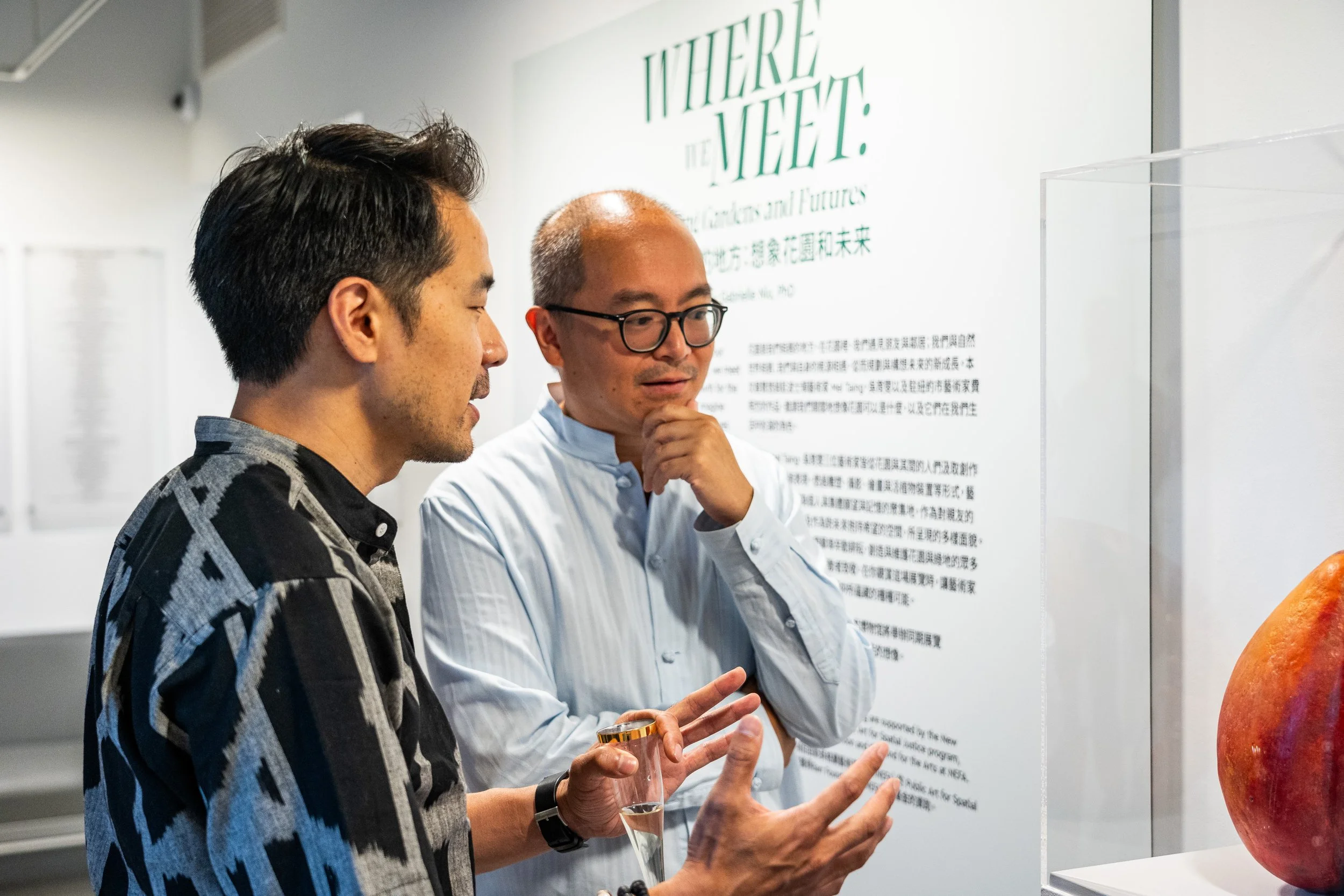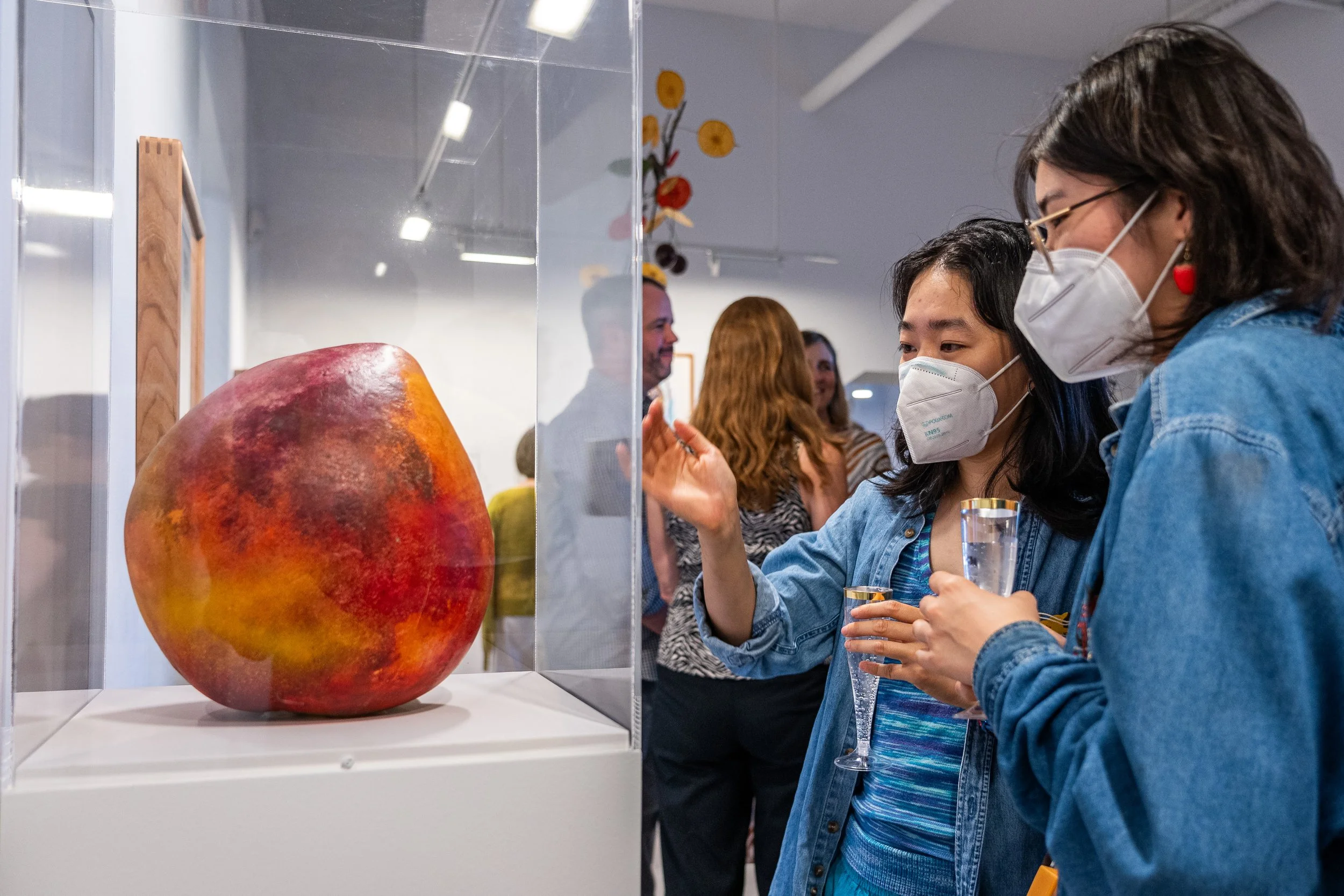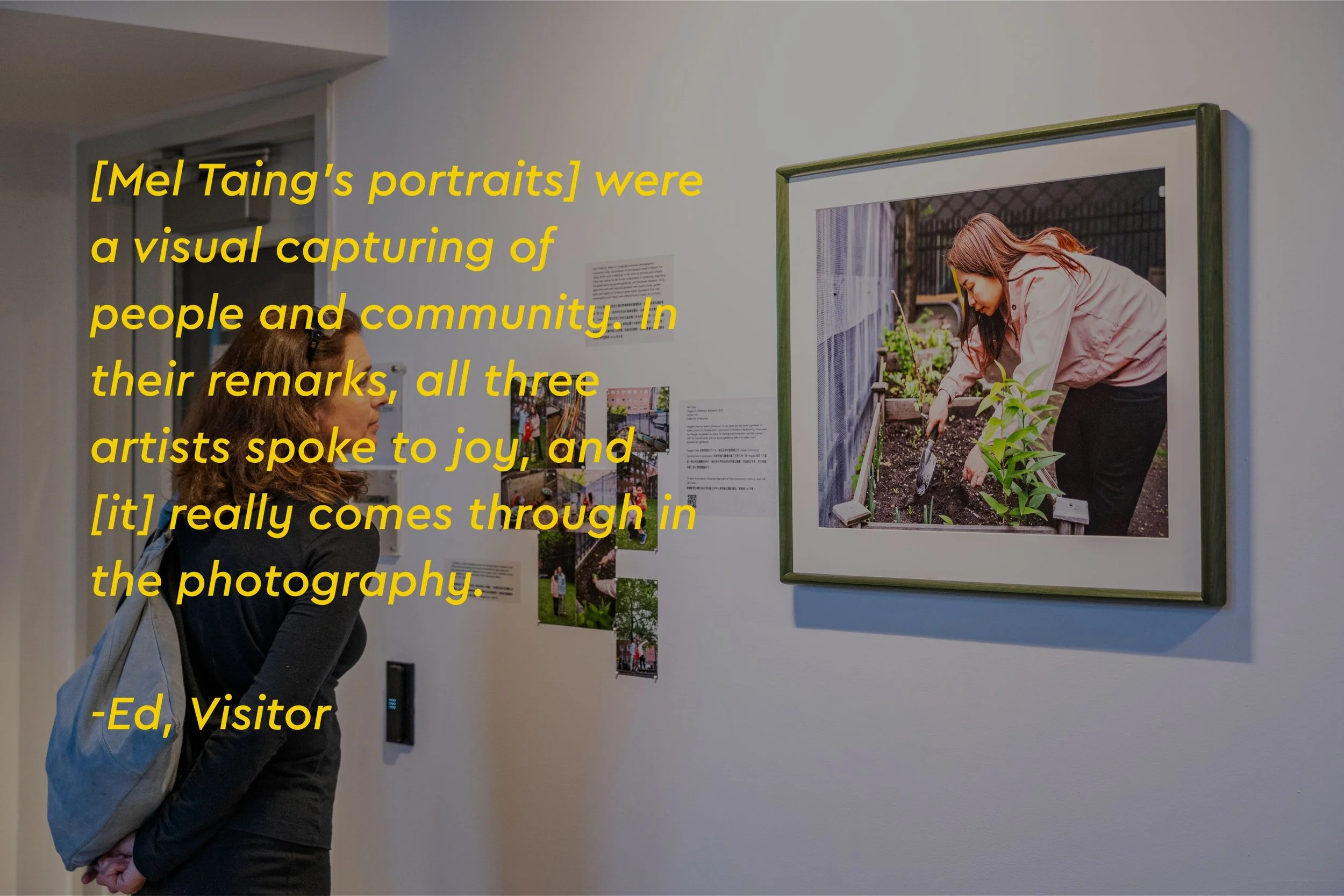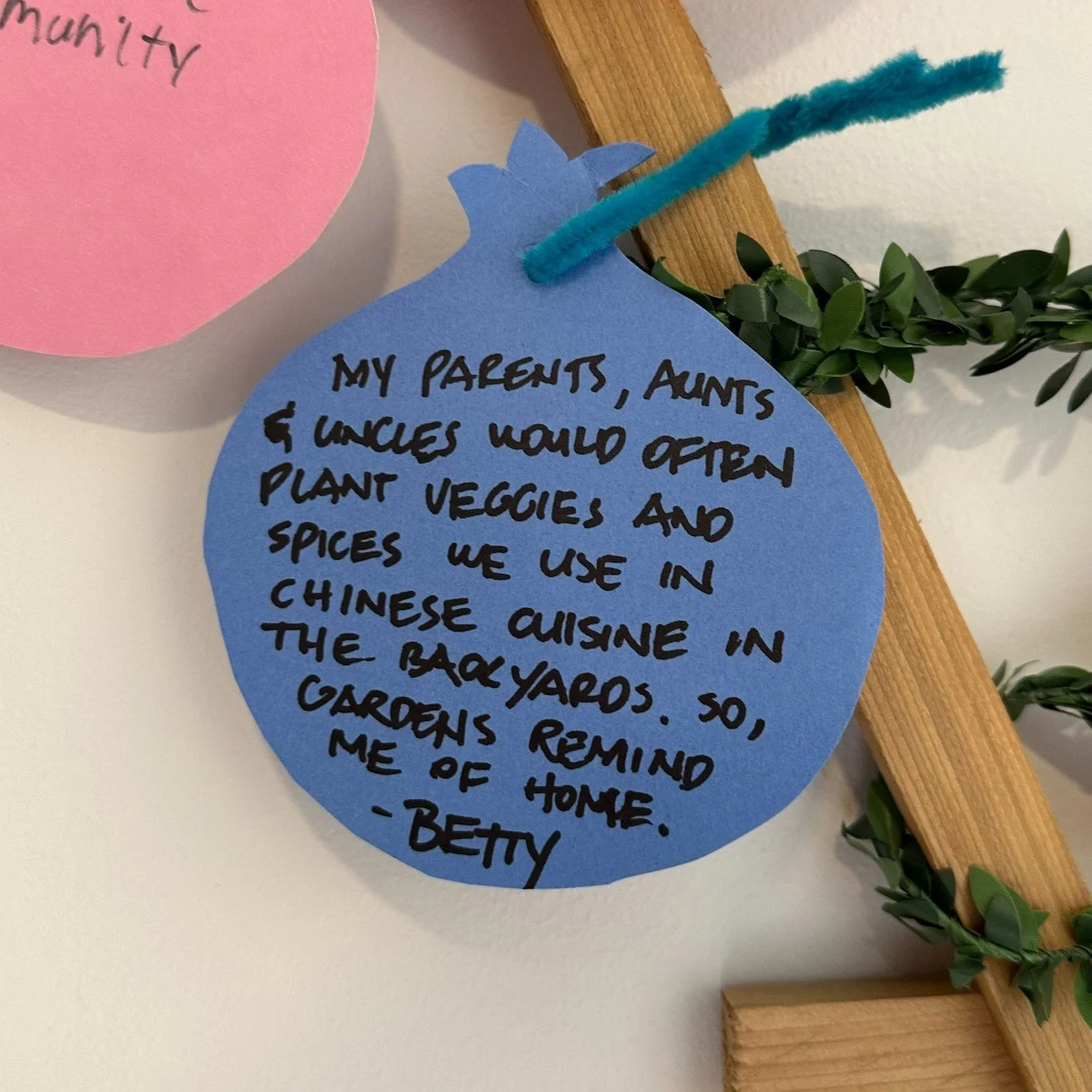Sharing Our Gardens: “Where We Meet” Opening Reception
“Here I can see how gardens connect to people’s personal stories, and a connection to [our] roots and cultures, especially through migration.”









On Friday, July 18, 2025, 180 visitors and community members came to Pao Arts Center for the opening of Where We Meet: Imagining Gardens and Futures. The new exhibit features the art of Boston-based artists Mel Taing and Yu-Wen Wu, and New York City-based artist Ming Fay. Curated by Gabrielle Niu, PhD Where We Meet is the culmination of a years-long partnership with the Isabella Stewart Gardner Museum. The exhibit highlighted gardens and their role in the community, sustenance, and green spaces, especially in Chinatown.
Upon arrival at the gallery, visitors were greeted by a larger than life peach sculpture created by Ming Fay. Next to the large peach is a framed sketch for an unrealized public art installation proposal for Manhattan’s Chinatown, which includes a peach with other auspicious fruits. In his work, Fay often played with size and scale to show that the world is ripe with unexpected beauty and abundance, if only you looked a little longer and a little deeper.
Further into the gallery hangs Mel Taing's photo installation featuring four large framed photographs and smaller photo collages of local gardeners and Chinatown community advocates. Each gardener shares their experience and relationship to green spaces and the importance of gardening in their lives.
Photo credit: Wenbin Huang
Finally, the exhibit is rounded out by Yu-Wen Wu’s site-specific Growing Tree, a sculptural and functional work, inspired by plants the artist’s mother grew. Wu’s living artwork is accompanied by a series of books featuring intricate illustrations of vegetables, along with family recipes and other gardening anecdotes, a further nod to the generational influence imbued in the work.
Photo credit: Wenbin Huang
Visitors enjoyed hearing from Parker Fay, Director of Ming Fay Studio, Taing, Wu, and Niu during an artist panel. Fay spoke on the importance of natural elements in his father’s work and shared:
“...my dad being very much into fruits, he was also interested in fruits as symbols. In Chinese culture peaches represent longevity. Orange is for good luck and pear is for prosperity, my dad is trying to introduce a sort of Chinese symbolism to a wider audience. He is also trying to elevate the aesthetic and also to provide some spirituality to residents and visitors of Chinatown.”
Photo credit: Staff
In the collaborative spirit of the exhibit, audience members contributed to it in several ways. Community Conversations, designed by Pao Arts Center summer Bloomberg Arts Interns, asked visitors to add their own reflections on the importance of gardens and greenspaces to a display in the shape of a trellis.
An accompanying zine, Between the Bricks: A Field Guide to Imagined Gardens, prompts visitors to explore green spaces between Chinatown and the Fenway, home to the Gardner Museum, after leaving the Center. The zine features four specially commissioned illustrations by Shaina Lu, ponnapa prakkamakul, Caroline Hu, and Yu-Wen Wu. Visitors also uploaded their photographs of unexpected ways they encounter nature in everyday life.
Visitors overwhelmingly came away from the exhibit more inspired to see gardens as a bridge between themselves, other visitors, and their communities. Many shared stories of how gardening had been a personal practice for generations of their family. The exhibit opened these visitors’ eyes to how gardening was a shared experience across people and Chinatowns.
Related Programming
Where We Meet: Imagining Gardens and Futures on view July 18 - October 10, 2025
Portraits and Imagining Greener Futures with Mel Taing | July 26 | 2:00 - 4:00 PM
What is a Garden: Connection, Memory, and Creativity | August 14 | 6:00 - 8:00 PM
About the Project
This exhibition and its public programming are supported by the New England Foundation for the Arts' Public Art for Spatial Justice program, with funding from the Barr Foundation and the Fund for the Arts at NEFA.



